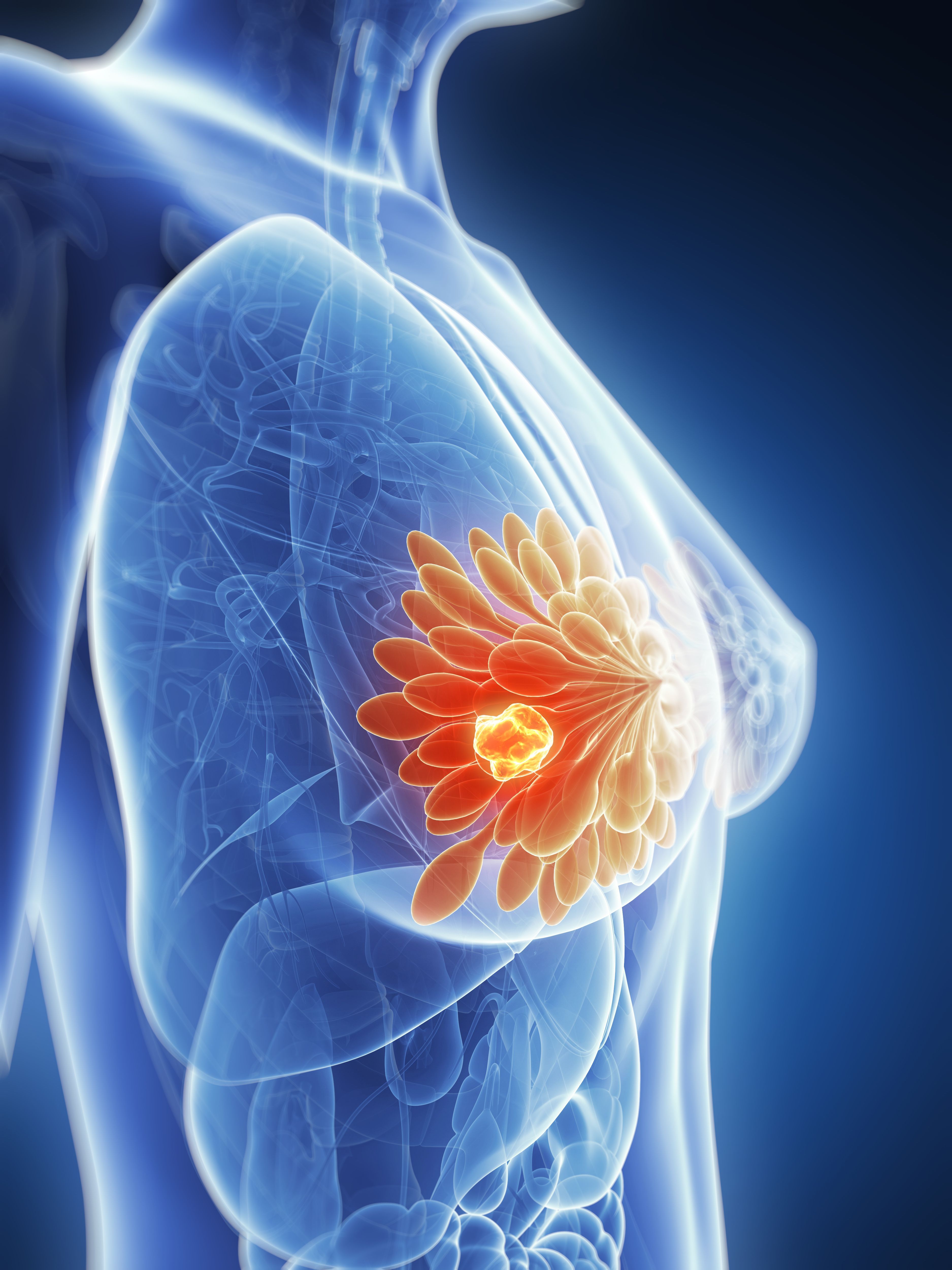Surgical Intervention Improves Efficacy in Young Patients with Breast Cancer
According to a retrospective study, patients with the BRCA gene who underwent risk-reducing mastectomy/salpingo-oophorectomy had improved survival outcomes.
According to a retrospective study, patients with the BRCA gene who underwent risk-reducing mastectomy/salpingo-oophorectomy had improved survival outcomes.

Patients with the BRCA gene and are 40 years or younger with breast cancer who underwent risk-reducing mastectomy (RRM) and/or risk-reducing salpingo-oophorectomy (RRSO) experienced higher rates of overall survival (OS), disease-free survival (DFS), and breast cancer-free interval (BCFI), according to findings from a retrospective, international cohort study presented at the 2024 San Antonio Breast Cancer Symposium (SABCS).1
At the median follow-up of 8.2 years (IQR, 4.7-12.8), 691 (13.0%) OS, 1928 (36.3%) DFS, and 1753 (33.0%) BCFI events were recorded.2
For patients who experienced RRM, there was a notably reduced risk of DFS (adjusted HR [aHR], 0.58; 95% CI, 0.52-0.65) and BCFI (aHR, 0.55; 95% CI, 0.48-0.62) events, irrespective of BRCA gene, age at diagnosis, tumor subtype, tumor size, and nodal status. OS events were also noted (aHR, 0.65; 95% CI, 0.53-0.78).
At the time of RRM, the median age was 36.6 years (IQR, 33.0-39.6); the median time from diagnosis to RRM was 0.8 years (IQR, 0.5-2.7); median follow-up after RRM was 5.1 years (IQR, 2.7-8.3). Per the sensitivity analyses, only patients tested for BRCA before or at diagnosis were included (aHR, 0.61; 95% CI, 0.42-0.88), as well as those with delayed entry (aHR, 0.54; 95% CI, 0.44-0.66), and when the 3-year landmark analysis was performed (aHR, 0.57; 95% CI, 0.45-0.71).1
For patients who experienced RRSO, there was a significant reduction in risk of BCFI (aHR, 0.65; 95% CI, 0.57-0.74) and DFS (aHR, 0.68; 95% CI, 0.61-0.77) events. There was also reduced risk of OS (aHR, 0.58; 95% CI, 0.47-0.70) events in this group, irrespective of age at diagnosis, tumor size, and nodal status. There was significant interaction with regards to tumor subtype (triple-negative breast cancer [TNBC]: aHR, 0.43; 95% CI, 0.32-0.58; hormone receptor–positive breast cancer: aHR, 0.80; 95% CI, 0.61-1.06) and specific to BRCA genes (BRCA1: aHR, 0.44; 95% CI, 0.34-0.57; BRCA2: aHR 0.85; 95% CI, 0.63-1.14).2
At the time of RRSO, the median age was 39.7 years (IQR, 37.4-41.8); the median time from diagnosis to RRSO was 3.0 years (IQR, 1.3-6.8); the median follow-up after RRSO was 4.9 years (IQR, 2.3-8.1). Per the sensitivity analysis, only patients tested for BRCA before or at diagnosis were included (aHR, 0.70; 95% CI, 0.49-1.01), when delayed entry was accounted for (aHR, 0.47; 95% CI, 0.38-0.58), and when the 3-year landmark analysis was performed (aHR, 0.58; 95% CI, 0.47-0.72).1
“Our results showed that undergoing RRM and/or RRSO was associated with improved OS, DFS, and BCFI in this special clinical setting,” Matteo Lambertini, MD, PhD, associate professor and consultant in medical oncology at the University of Genova – IRCCS Policlinico San Martino Hospital in Genova, Italy, wrote in the presentation.1 “These findings may help to improve the counseling on cancer-risk management strategies for BRCA carriers with young-onset breast cancer but should not be used to counsel BRCA healthy carriers nor BRCA carriers with a diagnosis of breast cancer at an older age.”
Patients from 33 countries were included in the study; 6238 patients were registered for participation, and 5290 were included in the final retrospective study. Analysis was split between patients who did (n = 2910) or did not (n = 2380) undergo RRM and patients who did (n = 2782) or did not (n = 2508) undergo RRSO.
The median age at diagnosis was 35.0 (IQR, 31.0-38.0): 1105 patients (20.9%) were 30 years of age or younger, 1929 patients (36.5%) were between 31-35 years, and 2256 patients (42.6%) were between 36-40 years.
Regarding genes, 3361 patients (63.5%) had the BRCA1 gene; 1891 patients (35.7%) had the BRCA2 gene. Of them, 2581 patients (48.8%) were tested for BRCA genes before or at diagnosis.
Of note, 2708 patients (51.2%) had N0 nodal status; 1898 patients (35.9%) and 2596 patients (49.1%) had luminal-like tumors and TNBC tumors, respectively. A total of 4860 patients (91.8%) had undergone chemotherapy.
Patients were required to have stage I to III invasive breast cancer, a diagnosis between January 2000 and December 2020, be less than 40 years of age at diagnosis, and have known germline-likely pathogenic/pathogenic variants in BRCA1 and/or BRCA2 genes.
Patients were excluded if they had stage IV de novo breast cancer, a history of ovarian cancer or other malignancies without prior breast cancer, were BRCA VUS or BRCA healthy carriers, or had no information on uptake/timing of RRM and/or RRSO, or uptake before their breast cancer diagnosis.
“This global study provides the first evidence that risk-reducing surgeries improve survival outcomes among young BRCA mutation carriers with a prior history of early-onset breast cancer,” Lambertini said.2 “We believe that our findings are critical for improving the counseling of BRCA mutation carriers with early onset breast cancer on cancer-risk management strategies.”
References:
- Lambertini M, Sonnenblick A, Agostinetto E, et al., Association between risk-reducing surgeries and survival in young BRCA carriers with breast cancer: results from an international cohort study. Presented at the 2024 San Antonio Breast Cancer Symposium; December 10-13, 2024; San Antonio, TX. GS1-08.
- BRCA-mutation carriers with a history of early-onset breast cancer may benefit from risk-reducing surgery. News release. American Association for Cancer Research. December 11, 2024. Accessed December 11, 2024. https://tinyurl.com/3bkmzb3r